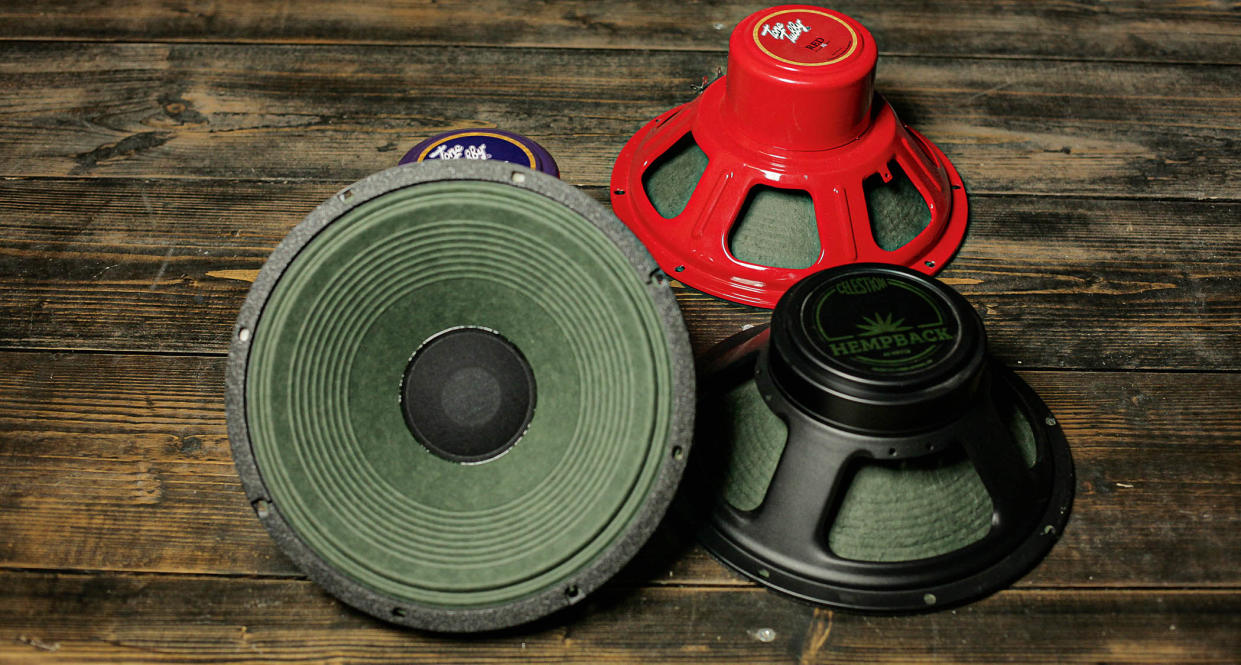How hemp cones affect guitar tone and why Derek Trucks and Carlos Santana are fans

As we’re going to be looking at speaker cones in this article it may be smart to explain roughly how this part of the speaker functions.
The cone (named after its conical shape, a tube wider at one end than the other) is attached to the speaker chassis at the larger end in a way that allows it to move when a force is applied at the thinner end.
The idea of a speaker driver is largely that the cone can move freely when a force is applied before returning to its initial position, but done in a single motion, so that the cone itself doesn’t change shape. In turn, this creates pressure waves in the surrounding air and lets us hear an acoustic representation of the electrical signal that was applied to the speaker.
This is called pistonic motion, and if truly allowed to happen, with the cone not changing shape, should allow for a pure replication of the original signal from your amp and avoid any unwanted distortion.
Now, we are all guitarists and most of us have no problem whatsoever with distortion. In fact, most of us actively seek it out, often in its most primitive and least scientific forms. It therefore will come as little surprise to know that a guitar speaker’s cone doesn’t move uniformly.
Those of us who have recorded a speaker will know how audible the difference is when placing two mics at the exact same points on a driver but 180 degrees apart – as in top and bottom.
This is why placing a mic over where the solder lugs are will produce a quite different, often nicer sound than the exact place on the other side of the dust cap. In the 80s, Celestion famously used Doppler interferometry to measure how the Alnico Blue cone moved and subsequently applied this to a new model, the Vintage 30.
The first company that springs to mind when I think of hemp cones is Tone Tubby
Of course, the use of different materials will affect the sound, too. In the pro audio and hi-fi world more uniform materials are preferred, often ones that are more resistant to moisture. But for guitar speakers, paper is the material of choice.
There are, however, a growing number of speakers that utilise speaker cones made from hemp: Celestion has its Hempback, Eminence has the Cannabis Rex, there’s Tonespeak’s New Orleans, and Weber has a few hemp-cone options, too. But the first company that springs to mind when I think of hemp cones is Tone Tubby.
I first heard about the brand in an early 2000s issue of Guitarist magazine, which had an Alnico shootout featuring Tone Tubby’s famous Alnico Red. Since then, I’ve had the privilege to play many (although sadly not most) of its extensive range, which is exclusively based around hemp cones. And to vouch further for these speakers’ pedigree, artists including Derek Trucks, Santana and Steve Morse have all played through the company’s wares.
So, what do they sound like? An online search of these speakers brings up talk of warm, smooth, organic tones, but in my experience hemp cones do tend to have some striking resemblances to each other, mostly that they are relatively dark sounding.
Now, dark is generally something I lean away from myself, but I have to admit they can be really useful when trying to tame some top-end. If you get it right, they can be a really useful tool in open-back cabs when trying to get some ambience, but they also smooth out some brightness – and this is why you’ll often see them as a replacement in combo amps, in particular those from Fender.
So, if you’ve noticed the increasing number of hemp-cone speakers out there and wondered what all the fuss was about, here’s your push to give them a go. I will end with a piece of advice, though: although most speakers benefit from some bedding in time, from my experience hemp-cone speakers are notorious for taking many hours to come to life.
So if you try them, make sure you give them time to show you their true colours. It may just be worth the wait.

